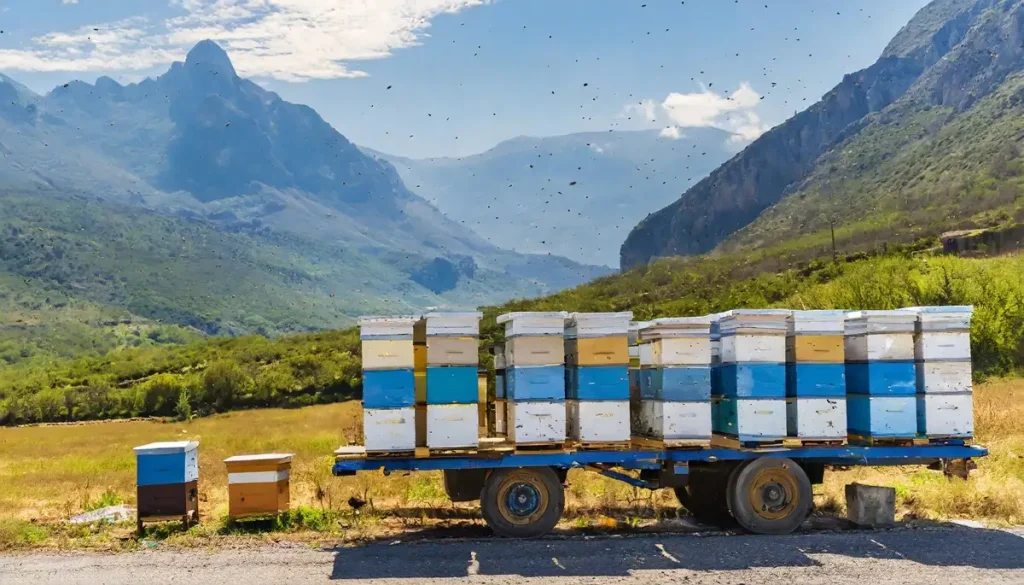Table of Contents
Migratory beekeeping involves transporting beehives to different locations to optimize forage opportunities for bees and enhance pollination services for various crops. Beekeepers move their colonies to areas where specific crops are in bloom, ensuring bees have access to diverse and abundant floral resources. This practice not only benefits agricultural productivity through improved pollination but also supports the health and vitality of bee colonies by providing them with a rich and varied diet.
In the below paragraphs, we will take a more detailed look at this topic.
Would you be surprised to learn that there are different forms of specialized beekeeping? One of them is known as migratory beekeeping. Not a lot of people know what this is because it doesn’t get a lot of press. But without migratory beekeeping, a good percentage of the agriculture across the world would be harmed. You see, bees and all sorts of plant life depend on each other.
As a hobby beekeeper, have you ever wondered what it might be like to be a professional migratory beekeeper? Well, it takes a tremendous amount of skill and knowledge to be successful at it. It also takes a full-time investment in beekeeping as a career. Anyone planning to be a hobbyist migratory beekeeper isn’t going to last very long.
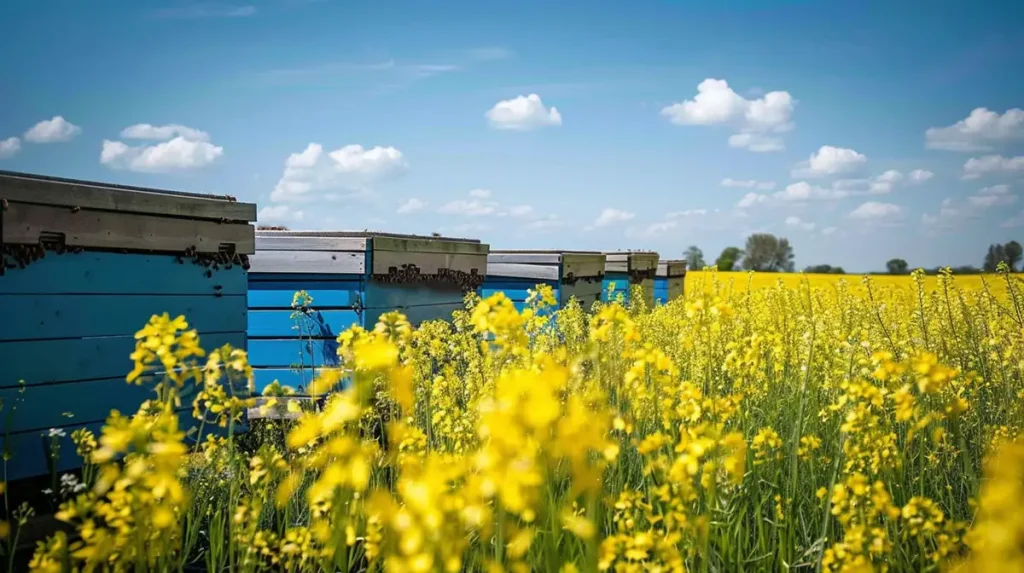
Migratory beekeeping is fascinating on many levels. Hopefully, this post will convey that to you. The more people learn about migratory beekeeping, the more they will appreciate how much bees contribute to so many things. From the food we eat to the flowers that bloom in our gardens, bees play a crucial role in making it all happen.
Migratory Beekeeping – A Basic Definition
The Betterbee glossary offers one of the clearest and most succinct definitions of migratory beekeeping I have ever seen. They describe it as “the moving of colonies of bees from one locality to another during a single season to take advantage of two or more honey flows.”
Many people prefer to keep their beehives stationary for the most part. Every now and again they may rent some hives to a local farmer looking for pollination services, but then those hives come right back to their property when the farmer is through with them. You probably keep your bees throughout the spring, summer, and fall seasons, hoping they will survive the winter by storing enough food to make it through the colder months.
A migratory beekeeper does things quite differently. He or she may have a few hives that remain stationary, but most of them are constantly on the move. As mentioned above, a migratory beekeeper develops hives specifically for the purpose of pollinating crops.
Some migratory beekeepers confine themselves to a comparatively small geographic region. For example, the Kitchn website published an article a few years ago profiling an Oregon beekeeper by the name of Henry Storch. As a migratory beekeeper, Storch moves hives around an area stretching from Western Oregon to California’s Sacramento Valley.
That may seem like a lot of real estate, but it’s nothing. There are migratory beekeepers who move their hives clear across the country multiple times per year. They are all following regional growing cycles and the honey flow. And make no mistake, they are paid very handsomely for their services.
Increasing Honey Yield Through Migration
You should know that migratory beekeeping is beneficial to beekeepers in a number of ways. Some beekeepers earn money by renting their bees for pollination purposes. Others are happy that their bees are aiding in pollination, but their primary purpose for engaging in migratory practices is to increase the honey yield.
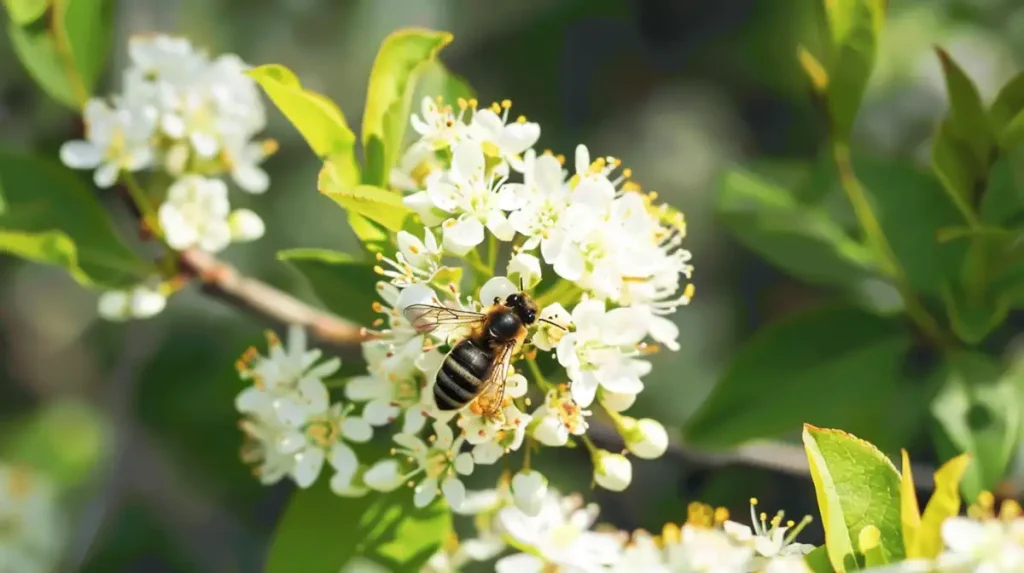
Migration takes advantage of weather and crop cycles. Consider one migratory beekeeper in Turkey profiled by the Daily Sabah in 2019. He spends four months per year tending to some 16 million bees occupying 400 hives out in the middle of nowhere. He does so because his hives will produce a lot more honey in central Turkey than they will at his home in the south.
- Carter, Anthony (Author)
- English (Publication Language)
- 194 Pages - 02/28/2024 (Publication Date) - Independently published (Publisher)
The Daily Sabah says that migratory beekeepers in that part of the world can glean between four and five harvests every year. Stationary keepers rarely see more than two harvests annually. Moreover, each hive produces about 20 kg of harvestable honey. The remaining 20-30 kg is left for the bees as food.
So let’s do the math. Multiplying 400 hives by 20 kg per hive results in 8000 kg annually. That would be more than 17,600 pounds. That is a lot of honey. The point is that migratory beekeeping increases honey yields by giving bees more access to pollinating opportunities. Keeping your bees active year-round does remarkable things for honey yield.
Little Time to Work
If you ever decide to get into migratory beekeeping, it is highly advisable to do a lot of research beforehand. The little bit you probably know is that migratory beekeepers have a lot of work to do but not a lot of time to do it. Mr. Storch mentioned a few paragraphs above is a great example. The Kitchn article profiling him made mention of the California almond season. Storch had brought a bunch a hives down to the Golden State in order to get the trees pollinated.
From a separate article published by Scientific American, I learned that Central California is home to enough almond trees to produce 2.5 trillion flowers annually. Those trees yield just under 2 billion pounds of almonds per season. But here’s the thing: the 80 billion bees that pollinate the trees only have two weeks to work their magic. And it often takes several trips to a single flower before it is successfully pollinated.
For someone like Storch, the task is to get hives down to Central California with enough time before pollination season begins to get things set up. Then he waits a couple of weeks to let the bees do their thing before packing them up and moving them onto the next site.
Spring is typically the busiest time of the year for migratory beekeepers. However, there are certain parts of the U.S. where agriculture continues year-round. That means there is no rest for the weary. Bees might be needed in California in February, Florida and Georgia during late March and early April, and up in the Northeast and the Midwest by May and June.
Migratory beekeepers in some parts of South America are on the move just as much. The same goes for Australia, northern Africa, parts of the Mediterranean, and even certain portions of Western Europe.
Migratory Beekeeping and Colony Collapse
Migratory beekeeping is not a new practice by any stretch. But like a lot of other things, we have made it highly sophisticated in the 21st century. The Scientific American article points out the possibility that migratory beekeeping may contribute to colony collapse. No one has definitively proved a link yet, but there has been some research that leans in that direction.
As the thinking goes, bringing so many bees into a small agricultural region in such a short amount of time leads to excessive competition among the various colonies. And because each colony brings its own idiosyncrasies into the local area, the heavy concentration of bees may encourage disease and pests.
It has also been suggested that the worker bees suffer from malnutrition because there isn’t enough food to go around. That could mean neither larvae nor queens are getting enough food either. That could lead to fewer eggs being laid and fewer healthy bees being bred.
While the effects of migratory beekeeping on colony health continues to be researched, beekeepers like Henry Storch go to great lengths to make sure their hives remain healthy. The most successful migratory beekeepers go as far as to selectively breed their bees based on the regions that they work in.
Local Genetic Factors
It is a known fact that bees located in different regions have slightly different genetic makeups. That is to be expected. Environmental conditions and the natural selection principle dictates that bees will develop regional differences as their biological defense mechanisms kick in to preserve existing colonies.
What some migratory beekeepers are doing is taking advantage of that natural selection process. They routinely breed bees during the off-season without providing any special care. They do not worry about diseases or pests; they do not necessarily work hard to protect hives against the weather; they do not attempt to protect their hives from invasive species.
The idea is pretty simple: those bees that survive the winter are the strongest of the strong. Those are the bees that keepers want to breed for that particular region. In doing so, they are breeding bees with a stronger genetic makeup that can withstand the various threats known to exist in that particular area.
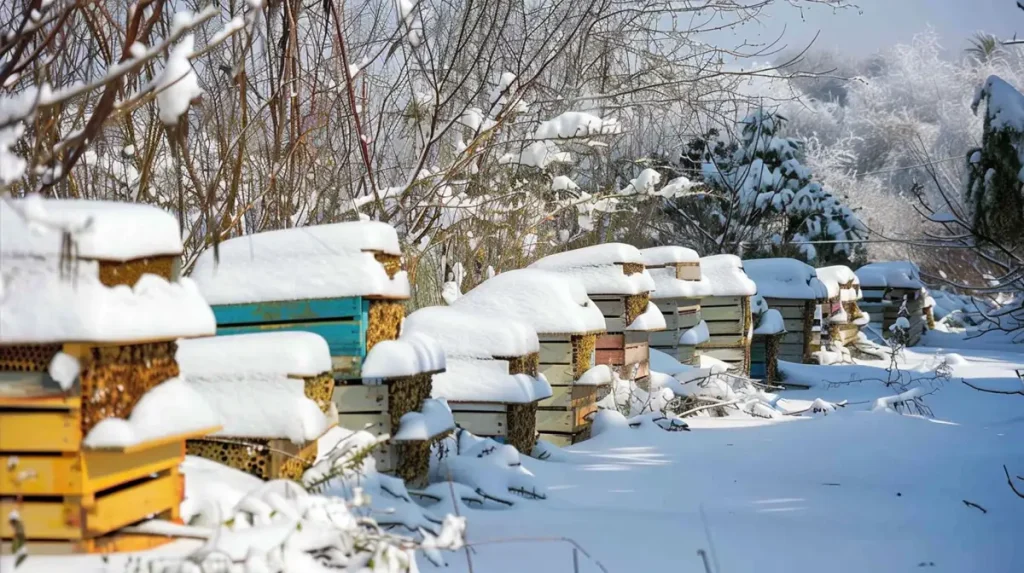
For a beekeeping hobbyist, this is going to be way too intense. Selective breeding requires quite a bit of knowledge and expertise. And of course, you lose a lot of bees in the process. Migratory beekeepers have to be prepared to lose entire colonies with only a few survivors in the spring. Most hobbyists do not have the kind of financial resources to afford that.
Transporting the Bees
Another thing with migratory beekeeping is the transporting of the hundreds of hives to various locations. Even transporting just one or two hives is quite challenging, so doing it as a full-time enterprise can appear rather daunting.
Transporting honeybees starts by getting them to hunker down in the hive. The best way to do this is to gorge them on honey. How is that accomplished? Typically, with a smoker. Contrary to common belief, smoke does not make honeybees groggy. What it does is fool them.
When you turn a smoker on, you are convincing the bees that they are in the midst of a forest fire. Their natural response is to gorge themselves with honey in anticipation of fleeing the fire. Gorged bees are docile bees because of all the honey in their stomachs. It is like you and I after a big holiday meal. We are so full of great food we just want to collapse and sleep for a while.
The other way to prepare bees for transport is to overfeed them. The more they feed, the more honey they will produce. A full hive of honey will also encourage bees to gorge themselves. In fact, there are those migratory beekeepers who introduce excess amounts of honey into the hive in late winter so that the bees remain docile during the spring’s first transport.
Overall, however, transporting bees can be a bit nerve-racking for the uninitiated. Honeybees are fragile creatures that are upset very easily. If you do not take great care when transporting them, you could easily cause colony collapse. Most hobbyists really do not need that sort of stress.
How Bees Are Transported
Physically transporting bees is a matter of loading hives on a truck and driving on down the road. Actual practices vary from one beekeeper to the next. However, assume your typical migratory operation has enough hives to warrant transporting them on a truck with an open-deck trailer.
Configurations differ but expect to get about 900 singles or 400 to 450 doubles on open-deck trailer. This is about average when you consider trailer sizes and weight limits. As for the number of bees, get ready for some eye-popping math.
A typical hive contains a single queen, a few hundred drones and anywhere between 20,000 and 80,000 workers. Let’s calculate the numbers based on an average of 40,000 bees per hive. If you are transporting 900 hives, that means you are carrying 36 million insects.
Loading and Transporting
Hives are loaded onto trailers with forklifts only after bees are encouraged to be docile by gorging them with honey. The hives are often covered with specialized bee tarps to keep the bees in place. These are mesh tarps that allow for airflow while simultaneously protecting the hives from airborne debris.
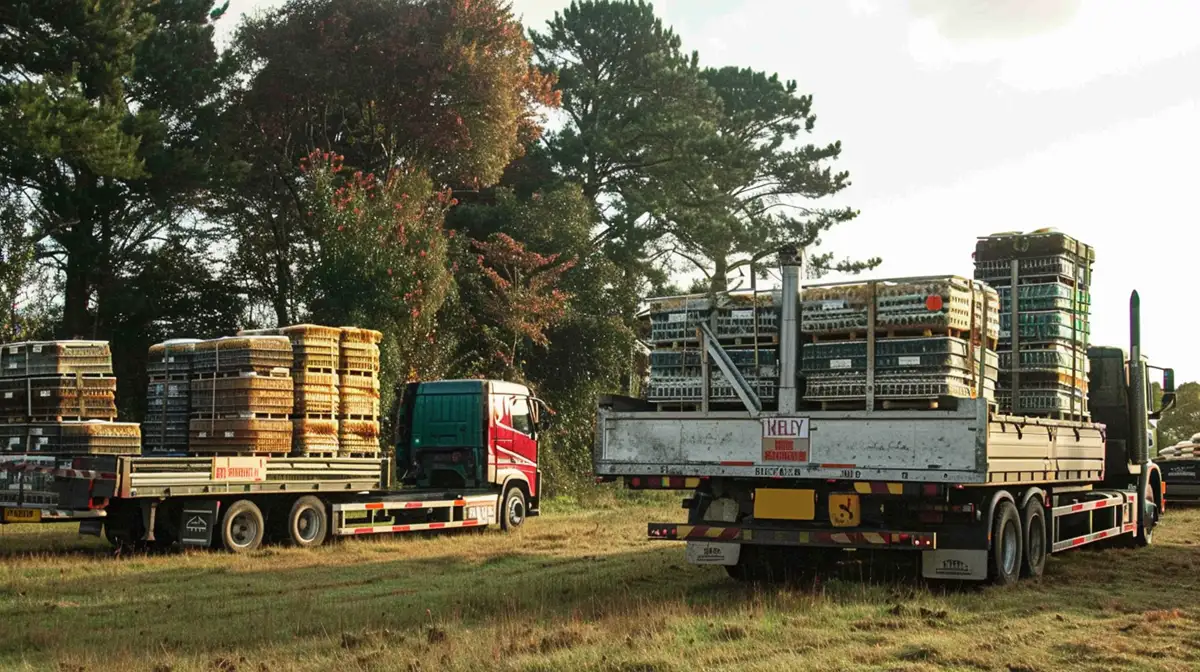
So many bees packed so tightly tend to generate a lot of heat. As such, trucks have to keep moving during daylight hours. Air flow keeps the hives from overheating. In addition, trailers are often rigged with water systems that spray the hives to keep them cool. The hives also have to be checked by the driver from time to time to ensure that they are still secure.
Upon arrival, the hives are unloaded with a forklift and set in place. Bees may need a few days to recover, which is why migratory beekeepers try to get in place a week or so before pollination actually begins.
Counting the Cost
There is one last thing to consider here: counting the cost of transportation. Migratory beekeepers have to walk a fine line between how much transport will cost versus how much revenue changing locations will generate. Figuring it all out is not always easy.
It is quite expensive to own and operate your own truck. You are paying for the truck, fuel, tires, maintenance, insurance, and on and on. You also need to have a CDL to drive it.
On the other hand, it is not necessarily cheap to hire a long-haul driver to get your bees from California to Florida. So like any business, you really have to focus on volume. That’s where you make your money.
Migratory beekeepers have to be able to fill an entire trailer to make long hauls profitable. Otherwise, they may have to limit their travel by staying closer to home. The other side of that coin is having enough hives to fill multiple trucks. If you were running an operation with 5,000-10,000 hives, you would have enough volume to make it worth your while.
Increasing Bee Populations
Transport and colony collapse issues aside, there is a particularly good benefit to migratory beekeeping beyond the money earned for renting beehives. The benefit is found in the increase of bee populations. A beekeeper who brings a few thousand bees to an almond orchard in the spring may walk away with a couple of frames of additional bees as a result of their pollination work. A 5% to 10% increase is not beyond the realm of possibility.
Simply put, bee colonies thrive and grow when there is plenty of work for them to do. A good migratory beekeeper who knows what he or she is doing can increase his/her own numbers simply by practicing sound beekeeping. The increase can be used to offset losses from other hives, build starter hives, or even sell directly to farmers.
Note that no migratory beekeeper is guaranteed to walk away from a job with more bees then he/she started with. Many do not. But the potential is always there. The best migratory beekeepers in the business are more than capable of growing their numbers at least a couple of times per season.
Migratory Beekeeping – Summary
So there you have it. Now you know what migratory beekeeping is. Many beekeepers are just happy to continue beekeeping as a small-time enterprise and a hobby that affords them a lot of joy and relaxation. Then there are those other beekeepers who love the challenge of migratory beekeeping. More power to them. They do a great service in support of agriculture.
Last update on 2024-04-25 / Affiliate links / Images from Amazon Product Advertising API

